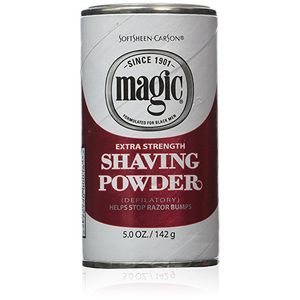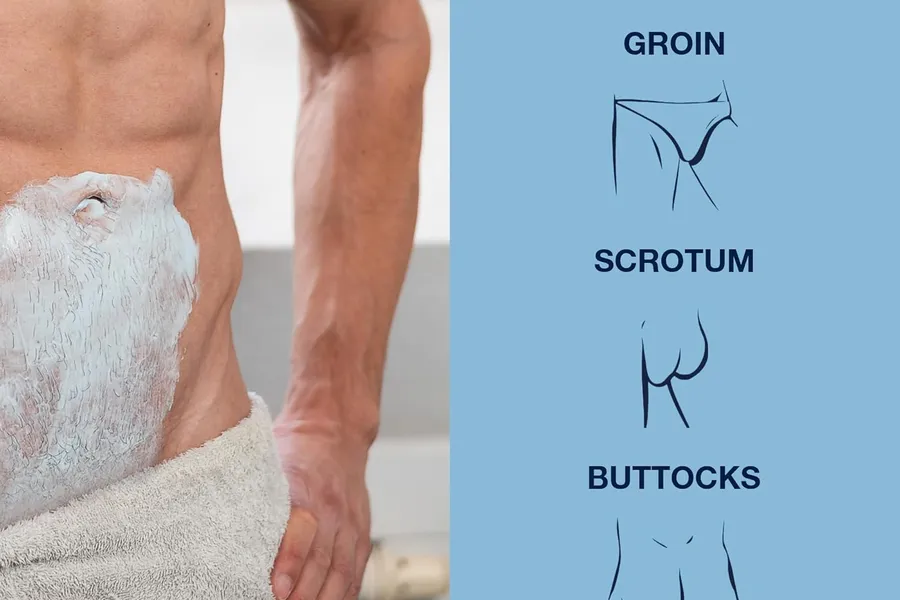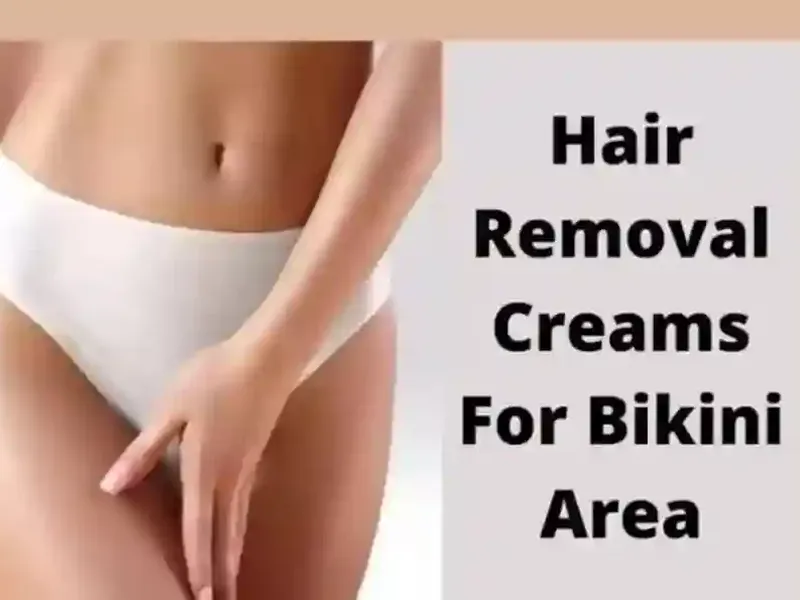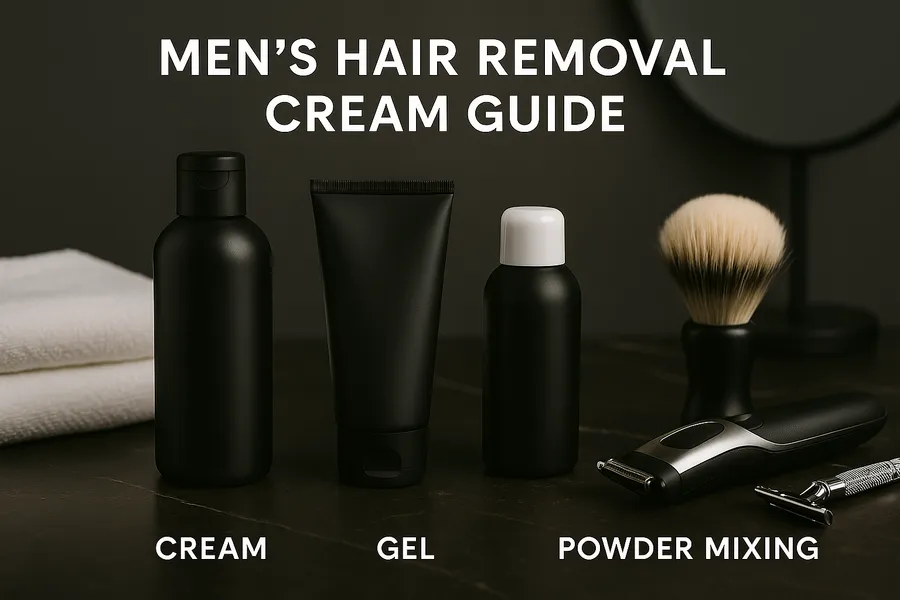Hair Removal Cream for New Moms: Postpartum Safe Options (2025)
Navigating hair removal as a new mom? Discover which hair removal creams are safe during breastfeeding, how to handle postpartum skin changes, and quick solutions for busy mom life.
Staring at your legs in the shower, wondering when you last had time for proper hair removal, while also worrying whether your usual products are safe now that you’re breastfeeding? Welcome to new mom life, where even basic grooming becomes complicated by safety concerns, time constraints, and a body that doesn’t quite feel like your own yet.
If you’re feeling frustrated by unwanted hair growth that seems worse than before pregnancy, while simultaneously being too exhausted to deal with complex beauty routines, you’re experiencing what millions of new moms face. Add in the anxiety about which products are safe to use while breastfeeding, and hair removal can feel overwhelming rather than refreshing.
The good news? There are absolutely safe, effective hair removal cream options for nursing mothers, and with the right approach, you can maintain smooth skin even with a demanding baby schedule. After helping hundreds of new moms navigate postpartum hair removal safely, I’ve learned that success comes from choosing the right products, understanding how your body has changed, and developing realistic routines that work with your new lifestyle.
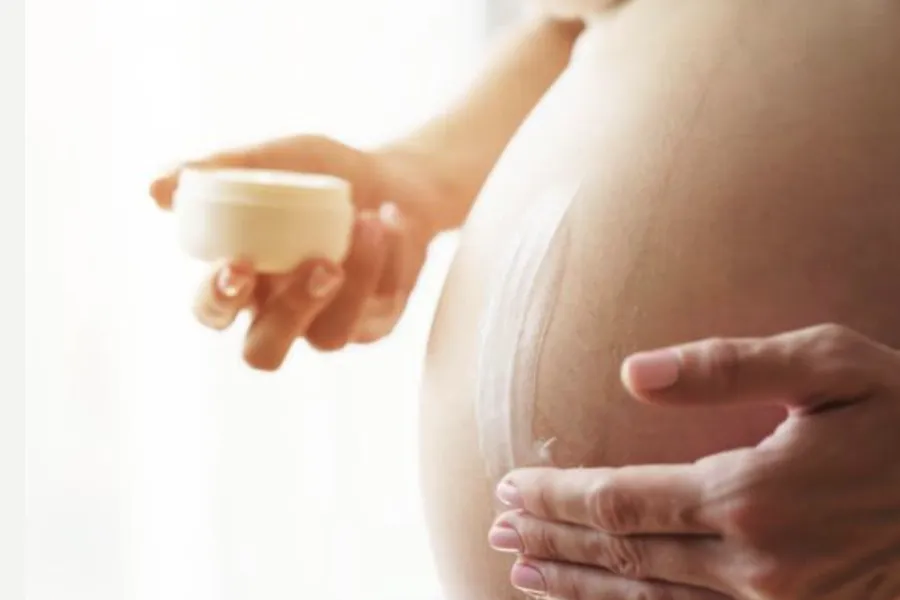
What You’ll Learn in This New Mom Safety Guide
- Which hair removal creams are safe during breastfeeding and postpartum recovery
- How pregnancy and nursing affect your skin and what adjustments you need to make
- Quick, efficient routines that work with limited time and energy
- Managing postpartum hair changes including thickness, growth patterns, and sensitivity
- Safety protocols that protect both you and your baby
- When to avoid hair removal and safer alternatives for new moms
Understanding Postpartum Skin and Hair Changes
Before choosing hair removal products, it’s important to understand how pregnancy and breastfeeding have changed your skin and hair, affecting both safety and effectiveness of different treatments.
How Breastfeeding Affects Your Skin
Hormonal Impact on Skin Sensitivity:
- Elevated prolactin levels increase skin sensitivity
- Estrogen fluctuations affect skin thickness and resilience
- Increased blood flow can make skin more reactive
- Stress hormones from sleep deprivation compound sensitivity
- Skin may react differently to products you used before pregnancy
Physical Skin Changes:
- Skin may be drier due to hormonal changes
- Increased tendency toward hyperpigmentation
- Slower healing and recovery times
- Possible development of new allergies or sensitivities
- Changes in skin pH affecting product compatibility
Postpartum Hair Growth Changes
Hormonal Hair Growth Patterns:
- Increased hair growth during pregnancy may continue while nursing
- Hair texture may be coarser or finer than before
- New hair growth in unexpected areas
- Previous hair removal areas may have different sensitivity
- Hair growth cycles may be disrupted by hormonal fluctuations
Common New Mom Hair Concerns:
- Facial hair growth due to hormonal changes
- Thicker leg and underarm hair
- Abdominal hair that appeared during pregnancy
- Changes in bikini area hair growth patterns
- Overall increased hair growth rate
Safety First: Hair Removal Creams and Breastfeeding
The primary concern for nursing mothers is whether chemicals in hair removal creams can transfer to breast milk and potentially affect their baby.
Understanding Chemical Absorption During Breastfeeding
Scientific Reality:
- Hair removal creams are applied topically for very short periods
- Minimal systemic absorption occurs with proper use
- Most active ingredients are not known to transfer to breast milk
- Risk is extremely low when products are used as directed
- No documented cases of harm to babies from maternal hair removal cream use
Extra Precautions for Peace of Mind:
- Choose products with fewer chemical additives
- Avoid application near breast area
- Wash hands thoroughly after application and removal
- Allow adequate time between application and nursing
- Consider timing treatments after nursing sessions
Ingredients to Approach with Caution
Generally Safe Active Ingredients:
- Calcium hydroxide (most common and well-studied)
- Potassium hydroxide (in moderate concentrations)
- Natural moisturizers (aloe vera, vitamin E)
- Basic preservatives and stabilizers
Ingredients to Minimize:
- Strong fragrances and artificial scents
- Unnecessary chemical additives
- Alcohol-based formulations
- Products with extensive chemical lists
Best Hair Removal Creams for Nursing Mothers
These products have been selected for their gentle formulations, minimal chemical additives, and positive safety profiles for breastfeeding mothers.
Top Safe Choices for New Moms
Best Overall for Sensitive Post-Pregnancy Skin:
Nair Hair Remover Lotion with Aloe & Vitamin E offers effective hair removal with skin-soothing ingredients that help protect sensitive postpartum skin. The gentle formula includes moisturizers that counter the drying effects of hormonal changes.
Best for Quick New Mom Routines:
Nair Sensitive Formula Hair Removal Cream works in just 3-5 minutes, making it perfect for busy mom schedules. The ultra-gentle formulation is ideal for skin that’s become more sensitive during breastfeeding.
Best Natural Option for Safety-Conscious Moms:
Veet Natural Inspirations Hair Removal Cream uses plant-based ingredients and natural moisturizers, providing peace of mind for mothers who prefer minimal chemical exposure while nursing.
Application Areas and Safety Considerations
Safest Areas for New Moms:
- Legs: Furthest from baby contact, low absorption risk
- Arms: Easy to clean thoroughly after treatment
- Underarms: Safe with proper hygiene precautions
Areas Requiring Extra Caution:
- Bikini area: Use gentlest formulas, ensure complete removal
- Abdominal area: Wait until fully healed from delivery
- Any area with stretch marks or healing skin: May be more sensitive
Areas to Avoid:
- Chest/breast area where baby may come in contact
- Any area with open wounds or healing incisions
- Areas with severe stretch marks until fully healed
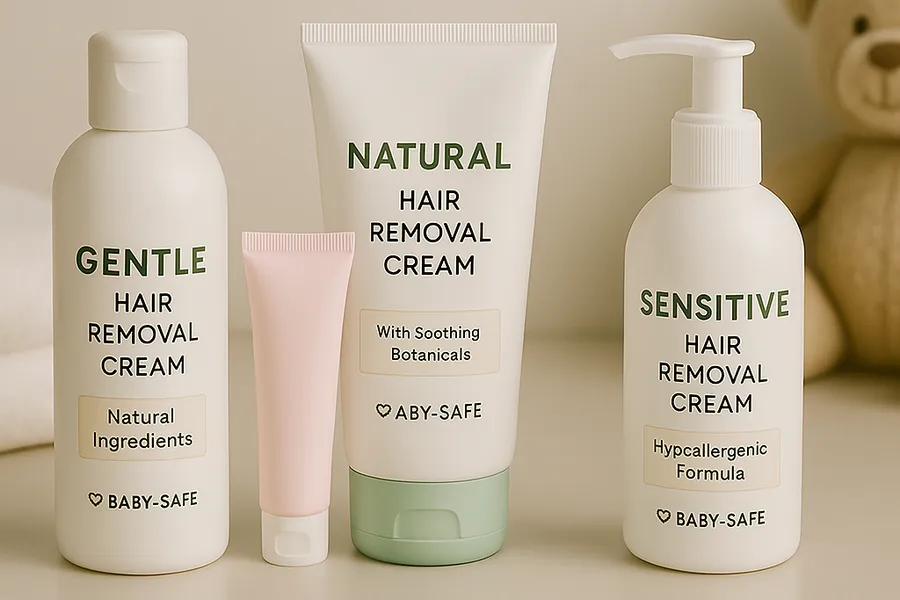
 :
Modified Application Techniques for New Moms
Postpartum skin requires gentler handling and modified techniques to ensure safety and effectiveness while accommodating the physical and emotional changes of new motherhood.
Pre-Treatment Preparation for Postpartum Skin
Timing Strategies for Busy Mom Life:
- Plan treatments during baby’s longest nap period
- Choose times when partner can watch baby
- Consider early morning or evening when household is quiet
- Have all supplies ready before starting
- Set realistic time expectations (add 5-10 minutes to usual routine)
Skin Assessment Protocol:
- Check for any new sensitivity or irritation
- Assess healing status of any stretch marks or scars
- Note any changes in skin texture or moisture levels
- Perform patch test if you haven’t used product recently
- Ensure you’re not overly tired or stressed before treatment
Gentle Application Process
Modified Technique Steps:
- Gentle cleaning: Use mild soap and lukewarm water
- Complete drying: Pat skin dry gently, don’t rub
- Conservative application: Start with less product than pre-pregnancy
- Reduced timing: Begin with 25% less time than package recommends
- Careful removal: Use gentle pressure, avoid scrubbing
Safety Enhancements for New Moms:
- Keep baby monitor nearby if treating during nap time
- Have phone accessible for emergencies
- Use timer religiously – exhaustion can affect time perception
- Work in smaller sections to maintain control
- Stop immediately if baby needs attention
Quick and Efficient Routines for Busy Moms
Time is precious when you’re caring for a baby. These streamlined routines help you maintain smooth skin without taking time away from more important priorities.
The 10-Minute Express Routine
Perfect for: Quick touch-ups, last-minute grooming needs
What you’ll need:
- Fast-acting hair removal cream (3-5 minute formula)
- Timer set for multiple alarms
- Damp towels pre-prepared
- Comfortable seating in bathroom
Step-by-step process:
- Minutes 1-2: Quick shower rinse and dry
- Minutes 3-4: Apply cream to one area (legs or underarms)
- Minutes 5-7: Processing time (can check on baby if needed)
- Minutes 8-9: Remove cream and rinse
- Minute 10: Apply moisturizer and clean up
The Strategic Weekly Routine
Perfect for: Comprehensive grooming when you have more time
Planning approach:
- Choose one day per week for full routine
- Coordinate with partner for childcare coverage
- Treat multiple areas in one session
- Focus on most visible areas during summer months
Priority-based approach:
- High priority: Areas visible in everyday clothes
- Medium priority: Areas visible in summer/exercise clothes
- Low priority: Areas only visible in intimate situations
- Skip entirely: Areas that won’t be seen for weeks/months
Emergency Touch-Up Strategies
For unexpected events or outings:
- Keep fast-acting cream readily available
- Focus on most visible problem areas only
- Use dry shaving as backup for quick fixes
- Strategic clothing choices to minimize visible hair
- Acceptance that “good enough” is perfectly fine

Managing Postpartum Hormonal Hair Changes
Hormonal fluctuations during breastfeeding can significantly affect hair growth patterns, requiring adjusted strategies for effective management.
Understanding Nursing-Related Hair Changes
Prolactin Effects on Hair Growth:
- Can increase hair growth rate in some areas
- May cause hair texture changes
- Affects hair growth cycles and timing
- Can make hair more or less responsive to removal
Estrogen Fluctuation Impact:
- Lower estrogen levels can increase body hair growth
- May cause coarser hair texture
- Can affect skin sensitivity to treatments
- Influences healing and recovery times
Adapting Your Routine to Hormonal Changes
Frequency Adjustments:
- May need more frequent treatments due to faster growth
- Monitor your individual patterns rather than following general guidelines
- Adjust schedule based on visibility needs and energy levels
- Consider seasonal variations in clothing and social activities
Product Strength Considerations:
- Start with gentler formulas and increase if needed
- Your hair may respond differently than before pregnancy
- Skin sensitivity may require milder products
- Be prepared to switch products if hormones change effectiveness
Special Considerations for C-Section Recovery
Mothers recovering from cesarean sections have additional considerations when it comes to safe hair removal during the healing period.
Timeline for Safe Hair Removal After C-Section
Weeks 1-2 Post-Surgery:
- Avoid all hair removal creams near incision area
- Focus only on areas far from surgical site (legs, arms)
- Use gentlest possible formulations
- Minimize bending and stretching during application
Weeks 3-6 Post-Surgery:
- Continue avoiding abdominal area until fully healed
- Can gradually return to normal routine for other areas
- Monitor for any increased sensitivity
- Follow surgeon’s guidelines for incision care
6+ Weeks Post-Surgery:
- Generally safe to resume normal hair removal routine
- Scar tissue may have different sensitivity
- Start conservatively on previously restricted areas
- Consult doctor if any concerns about healing
Safe Positioning and Mobility
Comfortable Positioning Strategies:
- Use shower chair or bathroom stool for stability
- Avoid twisting or straining abdominal muscles
- Have partner assist with hard-to-reach areas
- Take breaks if experiencing any discomfort
When to Avoid Hair Removal and Safer Alternatives
There are times when hair removal creams may not be the best choice for new moms, and alternative methods may be safer or more practical.
Situations to Avoid Hair Removal Creams
Temporary Contraindications:
- Active mastitis or breast infection
- Severe postpartum depression affecting self-care ability
- Any skin infections or open wounds
- Recent vaccination in treatment area
- Taking medications that increase skin sensitivity
Individual Risk Factors:
- History of severe allergic reactions
- Autoimmune conditions affecting healing
- Extreme skin sensitivity that developed during pregnancy
- Multiple skin allergies or contact dermatitis
New-Mom-Friendly Alternatives
Low-Maintenance Options:
- High-quality electric shavers for quick, safe removal
- Trimming instead of complete removal
- Professional waxing for special occasions
- Simply embracing natural hair during demanding newborn phase
Long-term Solutions:
- Professional laser consultations once breastfeeding is complete
- IPL treatments for gradual hair reduction
- Professional electrolysis for permanent removal
- Combination approaches based on time and budget
Emotional and Mental Health Considerations
Hair removal decisions for new moms aren’t just about physical safety – they’re also about mental health, self-care, and maintaining identity during a transformative time.
Self-Care vs. Practicality Balance
When Hair Removal Supports Mental Health:
- Helps maintain sense of personal identity
- Provides small moments of self-care and normalcy
- Boosts confidence during body image adjustments
- Creates routine that feels familiar and controllable
When to Prioritize Rest Over Grooming:
- During periods of severe sleep deprivation
- When struggling with postpartum depression or anxiety
- During baby’s illness or challenging developmental phases
- When hair removal creates additional stress rather than relief
Building Sustainable Routines
Realistic Expectation Setting:
- Your grooming routine will look different during this phase
- Perfection is not the goal – comfort and safety are
- Adjust standards to match your current capacity
- Remember that this intensive phase is temporary
Support System Integration:
- Ask partner to watch baby during grooming time
- Trade childcare with other new mom friends
- Consider hair removal as legitimate self-care time
- Don’t feel guilty about taking time for personal care
Conclusion: Safe, Practical Hair Removal for New Moms
Navigating hair removal as a new mom doesn’t have to be complicated or stressful. With the right products, realistic expectations, and flexible routines, you can maintain smooth skin safely while caring for your baby and adjusting to your new role.
Your new mom hair removal action plan:
- Choose gentle, nursing-safe products with minimal chemical additives
- Start conservatively with reduced timing and gentler formulas
- Develop flexible routines that work with your baby’s schedule
- Listen to your body and adjust based on hormonal changes
- Prioritize safety over perfection in all treatments
- Remember this phase is temporary – your routine will evolve as your baby grows
Most importantly, remember that there’s no “right” way to handle hair removal as a new mom. Some days you’ll have the energy and time for full grooming routines. Other days, dry shampoo and baby wipes will be your beauty routine. Both are perfectly valid choices for a mother caring for a little one.
Your worth isn’t determined by whether your legs are perfectly smooth or whether you’ve had time to remove unwanted hair. You’re doing an incredible job caring for your baby, and any personal care you manage on top of that is a bonus, not a requirement.
Ready to find your new mom hair removal routine? Start with one of our recommended gentle, nursing-safe formulas and remember that any routine that works for you and your baby is the right routine.
For additional guidance on gentle hair removal methods, explore our guides on comfortable hair removal options or learn about long-term solutions to consider once your breastfeeding journey is complete.




